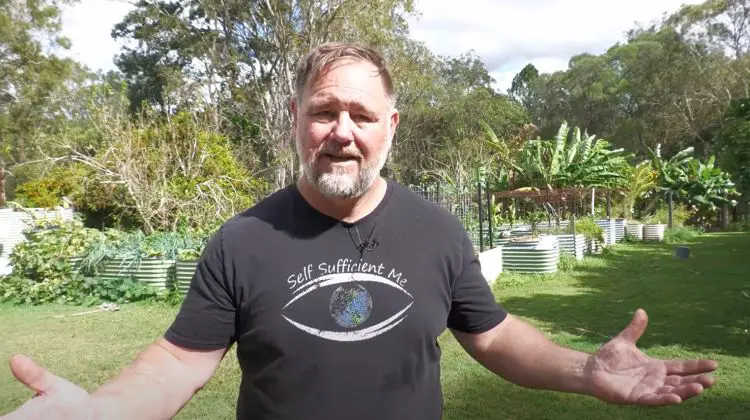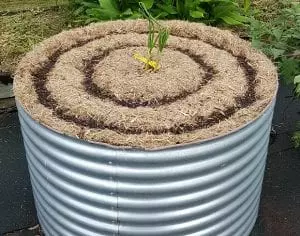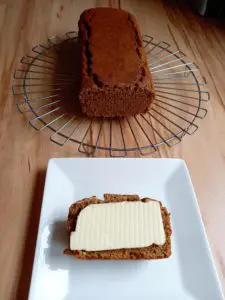Vegetable gardening is so exciting when you first start, and there’s so much to think about. The beds, the soil, the plants, the growing, the sun, the watering, and so on. But what happens once you’ve got everything in place? How do you maintain it? How do you know what to do?
Here, our 5 tasks you should do every day in the veggie garden tells you everything you need to know.

Watering
Watering is one of the most important daily tasks in any garden. Not only is it important in and of itself, but it rates highly because it helps you complete other daily tasks. This is partly why I prefer to water by hand, despite the large size of my garden. (Automatic watering systems are fine, but I only like to use them when I go away).
I find that watering by hand is easier, better, and actually saves water. Watering seedlings provides a good example of this. Tender young seedlings and new transplants need a specific amount of water and gentle pressure. Too much or too little water, especially at the beginning, can ruin the crop. I have found that the only way to provide the perfect amount of moisture for very young plants is to spot-water by hand.

Let’s say you had small seedlings and mature plants interplanted throughout a garden bed, and an automatic watering system set up. If you watered the whole bed every day to give the seedlings the water they need, then you could easily overwater others. This could lead to water wastage and waterlogging the mature cropping plants.
If you’re not sure how to tell when your veggie plants need water, use the ‘finger trick’. Part the mulch, then stick one of your fingers into the soil down to the second knuckle. If the soil feels damp, then it doesn’t need water. If the soil is dry, then give it some water.
Fruit trees, too, need to be watered according to their age and situation. Young trees need frequent watering while they’re still getting established, as do potted fruit trees. Mature trees planted in the ground need far less.
In my large orchard, it would be a waste of money to keep an irrigation system operating for the entire orchard. Instead, I use an enviro-cycle drip watering system that can be used & moved around as required. This waters several trees at once over a small area, thus giving me the flexibility to water precisely when and where I need to.

Transplant
Once you’ve had your garden established for a couple of years, you’ll find that more and more ‘volunteers’ appear with every season. (Volunteers are plants that you didn’t plant: they randomly pop up by themselves from previously dropped seed). I love volunteers, because they’re free plants that provide free food, but they usually appear in inconvenient places. I like to transplant them to more suitable positions within the garden while they are still young seedlings.
It’s easy to create plentiful volunteers. I often let plants go to seed & die off so that seed drops throughout my garden, because I can grow food year-round in my humid subtropical climate. This seed will then propagate itself when the conditions are right, creating a whole new crop without any effort. I’m occasionally able to leave volunteers in situ if they pop up in a suitable spot, but I generally need to transplant them to a position where they will be able to thrive.

When transplanting, trim off any excess foliage, bury the plant deep, then water it in well (every day!), until it shows significant new growth. Watering can be reduced once the plant has become established.
Weed
Weeding is a very important daily task, because weeds are the kind of volunteers you don’t want in the garden. Regularity is key to successful weed control; otherwise, they will quickly get on top of you. Most vegetable crops (especially at the seedling stage) are susceptible to smothering by weeds, so it pays to be particularly vigilant during the early growth stage.
By weeding every day, you’ll be able to pull weeds out when they’re big enough to grasp but young enough to still have a shallow root system. At this size, you can pull them out easily, and without disturbing the seedlings around them. 5-15 minutes weeding per day should be enough to keep your veggie beds almost weed-free. Remember, every day is not the same as all day.

Harvest
An established garden, whether large or small, will give you something to harvest every day- I know mine does.
Some crops (like oranges) can stay on the plant and be harvested over a long period of time according to your needs. Similarly, some underground growers like carrots and taro can be harvested one at a time. Soft-skinned fruits like eggplant and tomatoes are more time-sensitive, and need to be harvested before they rot or suffer pest damage. As mentioned above, I often let a couple of the fruits drop & rot into the soil, so as to create volunteers for the following season.
Salad crops and spinaches are another good reason for daily harvesting. The cut-and-come-again varieties are fantastic in fresh salads and sandwiches, and regular cutting encourages new growth. This also applies to herbs (especially during a change of season growth spurt), when regular pruning creates strong growth and a bumper harvest.
Minor pruning can be done daily, along with harvesting. Tomatoes, for example, constantly need their suckers and extra foliage removed so that they don’t sprawl. Pumpkins, too, can take over other plants, so they should be trimmed back before they smother other crops.

Inspect
It’s important to walk around your garden every day and inspect as much as you can. This allows you to stay on top of minor maintenance like pruning, weeding and trellising, plus spot any pests & diseases before they become a major problem. Watering with a hand-held hose gives me plenty of time to inspect individual plants, so the two tasks really do go hand-in-hand.
If you do see some pest activity, it is worthwhile trying to improve a plants overall health and growing conditions before applying any pest remedies. A good dose of quick-acting liquid fertiliser followed by some slow-release granular fertiliser or home-made compost will give an all-round boost and increase a plants immunity, which in turn will help them withstand pest pressure. Healthy plants attract good bugs which overtake the bad ones, thereby creating a balanced ecosystem in your garden.

There are lots of things to look for regularly in the garden- after all it is a living, growing ecosystem. There might be things to harvest, things to transplant, signs of large pest damage, fallen or broken support structures, beds that need refurbishing, sick plants, sprawling plants or dry soil.
Bonus Tip- Enjoy Your Garden!
Don’t forget to enjoy your garden- after all, that’s the whole point! Gardening is good for the soul, so making the time every day to get out there and walk around, relax, and ground yourself is all-important. Remember, connecting with the earth is one of the best ways to de-stress, and a garden need not be big to be enjoyed.
For more info & a visual demonstration of the 5 tasks you should do every day in the veggie garden, check out our youtube video!













